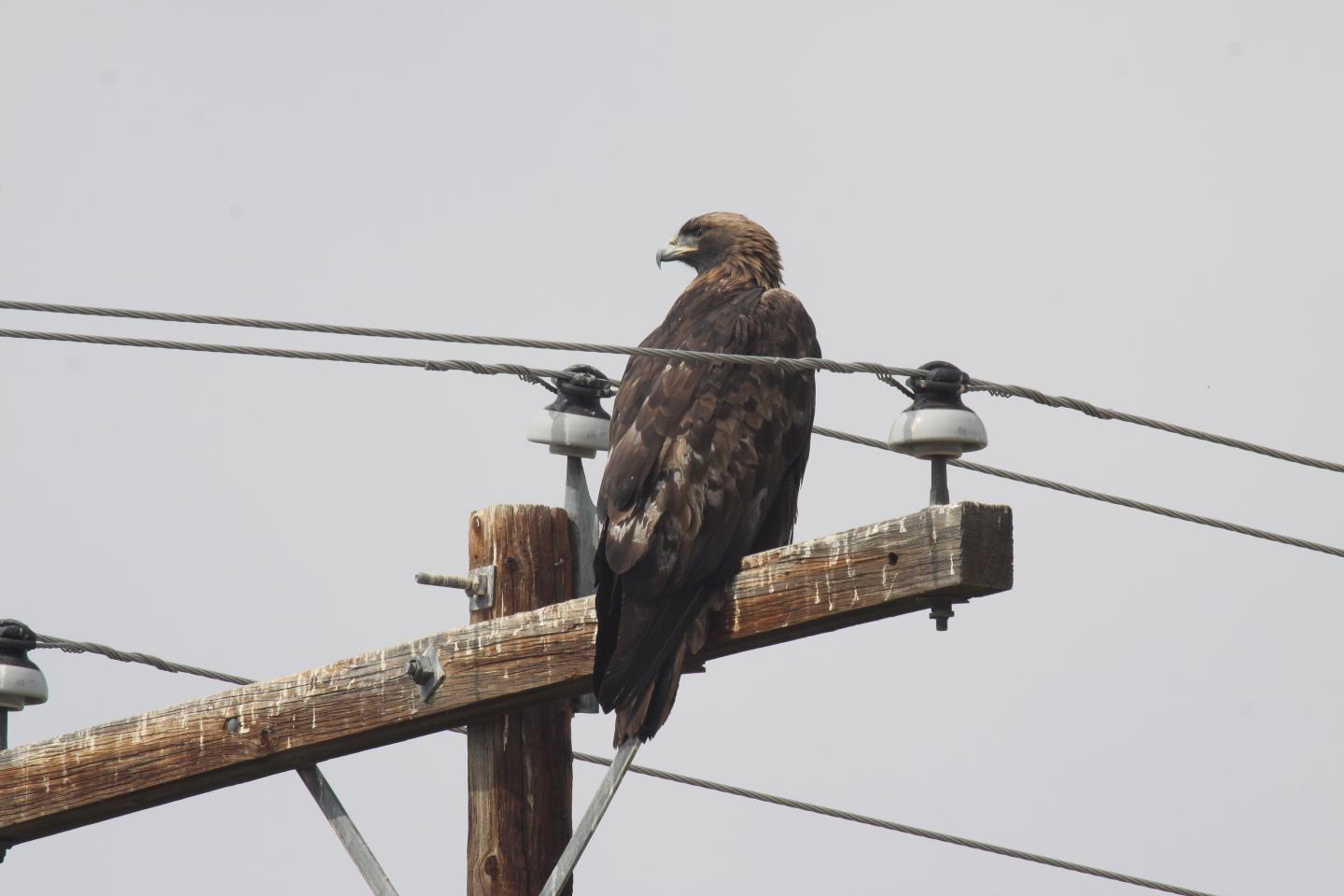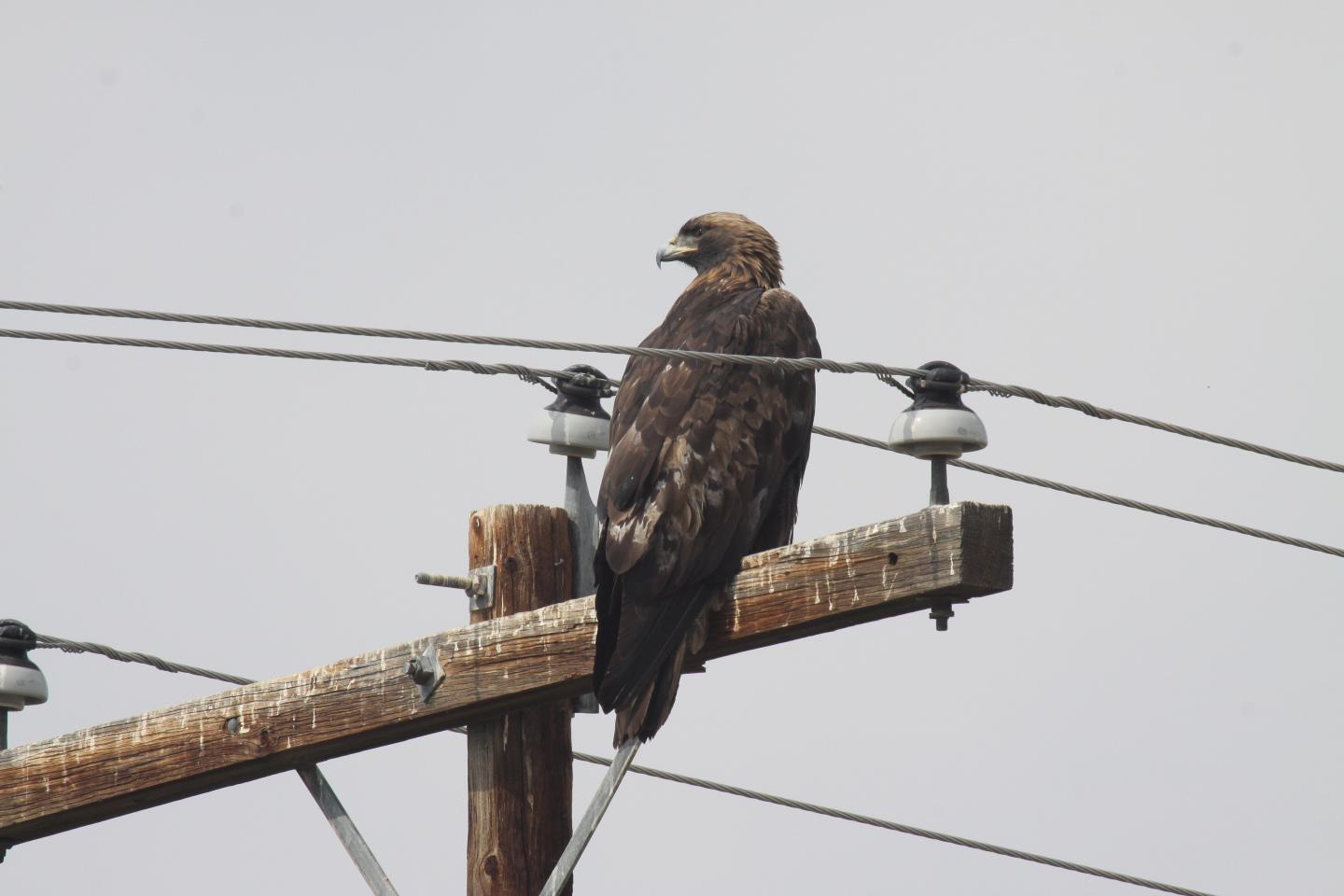
Credit: EDM International
Despite efforts to retrofit power poles and to build new poles to avian-friendly standards, electrocution remains a substantial cause of death for the golden eagle. The global conservation problem results in an estimated 504 eagles electrocuted annually in North America alone. A new Journal of Wildlife Management article examines the risk factors and mitigation techniques from literature published from 1940-2016 and provides new strategies by region to target high-risk poles that could substantially reduce the mortalities.
The authors note eight electrocution risk factors, with pole configuration as the most frequently identified. Age was the second most frequently identified risk factor, with juvenile eagles electrocuted at approximately twice the rate of subadults or adults.
Risk was also associated with large body size, high-quality habitat, high prey density, winter dispersal, inclement weather, and intraspecific interactions. Risk modeling based on these factors may help electric utilities and other stakeholders identify and prioritize high-risk poles for retrofitting.
"Electrocution of eagles is preventable with careful retrofitting of existing poles and use of avian-friendly construction design on new poles located in eagle habitat," said lead author Elizabeth Mojica, of EDM International, Inc.
To help offset the costs, the authors suggest that compensatory mitigation funding from eagle take permitting might persuade utility companies to make the modifications.
###
Media Contact
Penny Smith
[email protected]
http://newsroom.wiley.com/
Related Journal Article
http://dx.doi.org/10.1002/jwmg.21412





